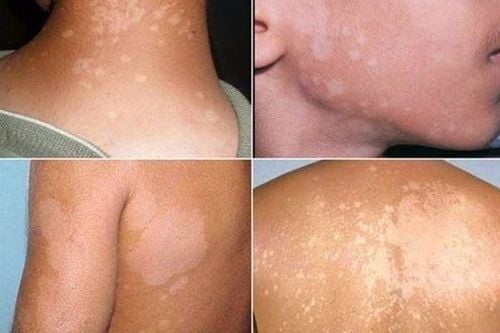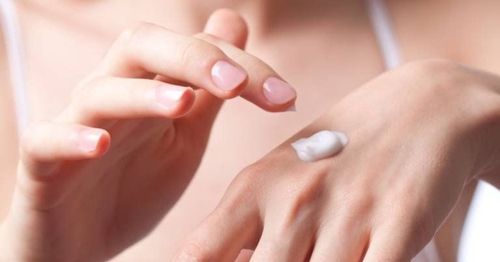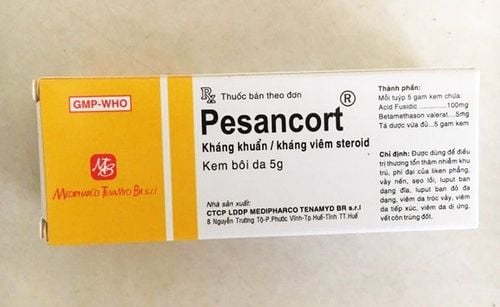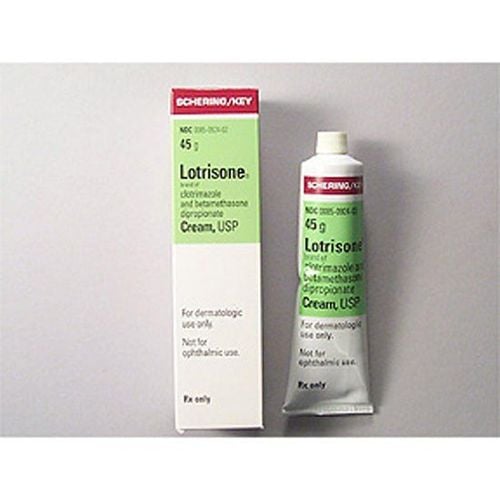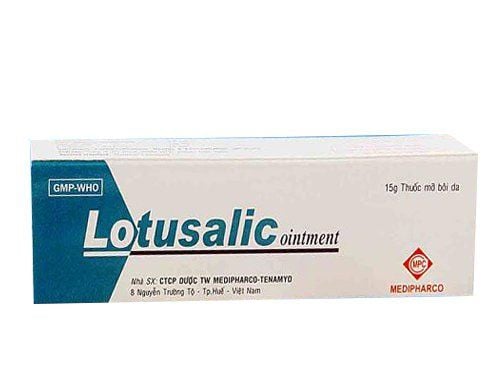This is an automatically translated article.
The article was professionally consulted by Specialist Doctor I Le Thi Thu Hang - Dermatologist - Department of Medical Examination & Internal Medicine - Vinmec Hai Phong International General Hospital.Normally, there are many bacteria on the skin, most of which are staphylococcus and streptococcus. The bacteria are most concentrated in hairy areas, areas that often sweat, in folds, pores. The places where sweat, sebum, and dirt are concentrated are also the gateway for bacteria to enter the skin, causing infectious dermatitis, also known as purulent dermatitis.
1. Infectious Dermatitis – What is Purulent Dermatitis?
Skin occupies the largest area in the body, whose main function is to protect the body from the external environment. However, the skin can also become infected. Skin infections have many causes and symptoms can range from mild to severe. Most mild skin conditions can be treated with over-the-counter medications and home remedies, while more severe skin infections require medical attention.Human skin is also a "fertile living ground" for many species of bacteria, even fungi and parasites. The most common types of bacteria are staphylococcus (staphylococcus) and streptococcus (streptococcus). Under normal conditions, these bacteria do not cause disease on the skin, but under favorable conditions (weak body, poor skin hygiene, hot environment, itching, scratching, trauma to the skin). , diabetes...) then these bacteria will increase their toxicity and cause skin infections, most typically pyoderma.
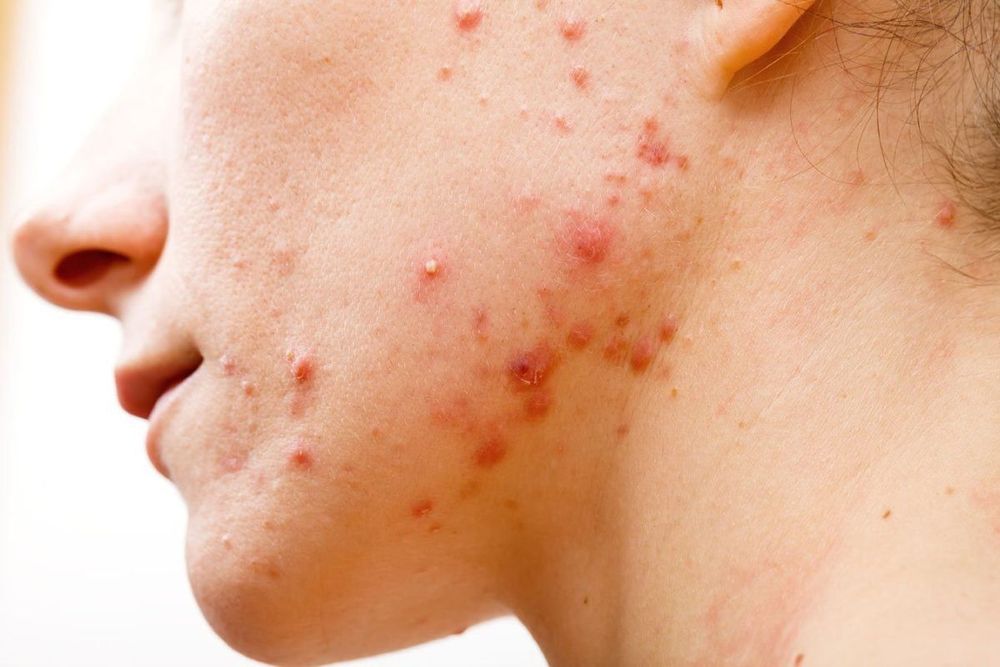
2. Pyoderma caused by staphylococcus
Staphylococci often damage hair follicles. There are the following main diseases:Superficial Folliculitis Inflammation at a shallow location, at the top of the pore. Initially, the pore is slightly red and swollen, there is pain, then small pustules form, around the pore there is a narrow inflammatory halo. A few days later, the pustules dry up and leave behind a dark brown exudate. Eventually, the scab peels off and leaves no scars.
Deep folliculitis Manifestations: around the hair follicles are swollen many clusters, around the pores there are pustules. Pustules can grow scattered or concentrated in clusters, red, hard, rough, when squeezed will produce pus. Deep folliculitis is often concentrated in the chin, nape, scalp... often persistent, or recurrent.
Folliculitis This is also one of the inflammatory conditions of the hair follicles. If the boil is large, grows a lot, it may be accompanied by fever, and the nearby lymph nodes are painful and swollen. Boils growing in the ear are often very painful, folk also call the name "beyond". Boils around the mouth, also known as "dental nails", are very dangerous because they can cause venous occlusion, sepsis, and death.
Nail boils found on the nape, back, and buttocks caused by staphylococcus aureus are very toxic, common in the elderly, weak, alcoholics, diabetics, poor eaters. When broken, the pus has many holes like honeycombs, which can cause sepsis complications and death.
Potholes This is also a folliculitis, accompanied by inflammation of the sweat glands, sebaceous glands in the armpit, forming a deep pocket of pus in the dermis and dermis. Lesions are lumpy, usually in the armpit, at first, the boil becomes hard, then softens and bursts with pus. There may be one or more potholes in an armpit. The disease often progresses persistently, or recurs, especially in the summer.
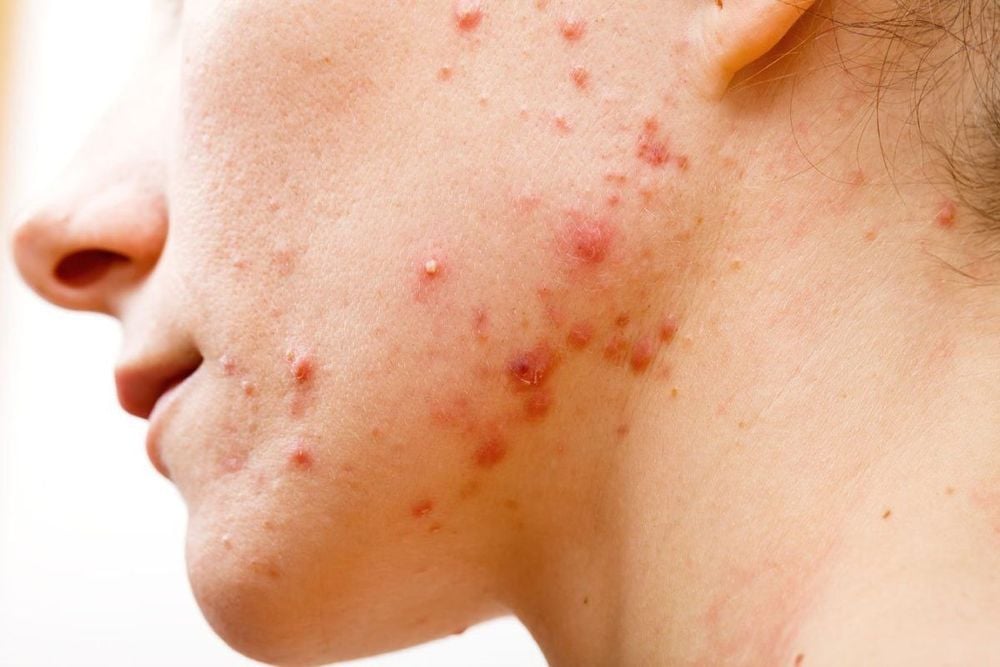
2. Pyoderma due to streptococci
There are many types of bacteria on the skin, most of which are staphylococcus and streptococcus, concentrated in hairy areas, sebum, sweat... especially when the skin is exposed to a contaminated environment. During and after floods, people living in flooded areas have to come into contact with heavily polluted water sources, so they are very susceptible to skin inflammation.Like staphylococcus, streptococcus is also a type of bacteria present on the skin, when conditions are favorable, they multiply rapidly and cause disease. On the other hand, environmental strep like dirty water can penetrate the skin and cause disease. Streptococcal dermatitis has many diseases:
Impetigo In impetigo, streptococci often combine with staphylococci to cause disease, children are more susceptible to the disease than adults. The disease is common in the head, neck, face, and extremities, from which it spreads to other places. It is very contagious, so it is also called impetigo.
Lesions begin with a small, round, inflamed vesicle with a red, inflamed halo. The water was clear at first, then gradually turned into cloudy pus. The vesicle and pustulosis phase is very short, then scabs with yellow secretions, under the scab is a red, shallow, non-aggravating layer.
Children have head impetigo in clusters, dark yellow scales, sticky hair, under the scaly red, watery skin. Impetigo lesions scattered throughout the body, may be accompanied by fever, complications of acute glomerulonephritis, edema of the legs, eyelids due to glomerulonephritis.
Treatment of scaly impetigo: apply gauze and wash with antiseptic solutions. When there is a pus-filled blister that has not yet broken, use an antiseptic needle to poke the pus out into the cotton, not to let the pus drain into the healthy skin.
Dot antibacterial drugs milian, methylene blue 1%, eosin 2% or fucidic acid cream 2%...
Treat with systemic antibiotics.
Bathing should be avoided to strengthen the wound.
Prevent infection by not sharing clothes, blankets, nets, towels or other personal items with the patient.
Impetigo (Ecthyma) This is a type of impetigo that spreads deep into the dermis, usually in the lower extremities, especially in the limbs with varicose veins. The disease is common in patients with malnutrition, poor hygiene, diabetes or alcoholism.
Initially as a blister or pustule, then the pustule burst, crusted with thick dark yellow or dark brown scabs, scaly in many high extrusion layers called snail scales. Peeling leaves a pale base ulcer, pus, few flesh buds, the skin around the ulcer is purple, persistent, difficult to heal. If the impetigo is severe for a long time, it can become a deep ulcer: ulcer with clear boundaries, oval shape, wide and deep ulcer, surrounding skin organization hardens, pale color, very persistent.
Treatment: wash the ulcer with 1/4,000 potassium permanganate solution, dot silver nitrate solution 0.25 - 0.50%, apply antibiotic ointment, take orally or inject antibiotics.
Intertrigo Intertrigo is a common disease in fat children or obese people, sweating a lot. Lesions are common in the folds of the neck, groin, buttocks, behind the ears, navel, and skin folds. The interstitial folds are red, oozing fluid, with a thin outer edge of the skin, watery ulcers, pus discharge, very painful.
Treatment: wash with 1/4,000 potassium permanganate water, dip in 0.25% silver nitrate solution, apply lake water, avoid applying ointment. Children need to be bathed often, diapers changed, talcum powder, baby powder sprinkled in the folds.
Impetigo Common in children, the two corners of the mouth are cracked, bleeding, yellow scabs, burning pain, easy bleeding, causing discomfort when eating and drinking. It can be spread by sharing cups or sharing towels. Treatment: dip 0.25% silver nitrate solution, antibiotic ointment.
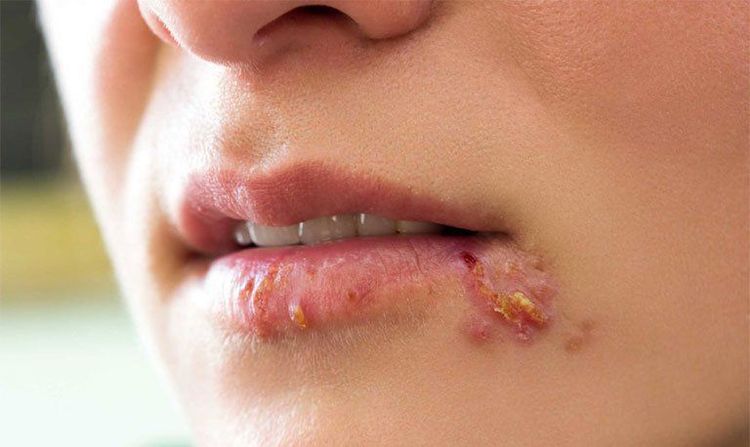
Onset: sudden high fever, convulsions in children, headache, malaria and vomiting. The skin in the affected area feels tight, the second day will see red, edema, and shine. The group of erysipelas is bright red, from a few centimeters to tens of centimeters, slightly higher than the skin surface, clearly demarcated, with raised margins, very painful to squeeze.
Patients with high fever lethargy, lymph nodes near the lesion site are swollen and painful. Possible complications of endocarditis, arthritis, meningitis. In children, the mortality rate is 50% if complications are present. Treatment: antibiotics, combination treatment of pain relief, sedation, vitamins ...
3. Note when treating pyoderma and disease prevention
When there are symptoms of the disease, it is necessary to visit a medical facility to determine the disease and prevent complications (glomerulonephritis, sepsis...). Do not arbitrarily use antibiotics, topical drugs, plaster, apply leaves... Do not scratch the inflamed skin, do not squeeze the inflamed acne, do not turn pus... Keep the body clean, do not Eat too many foods with a high sugar content. Fortified with vitamins, a high-protein diet helps to increase the body's resistance. At Vinmec International General Hospital, there is a package of examination and consultation for atopic dermatitis treatment for all customers of all ages. Customers at risk such as allergies, affected by ambient conditions such as weather, climate, humidity, ... will be examined and tested including:Specialist examination Dermatology Perform tests such as: quantification of IgE, fresh mycobacteria, specific IgE for respiratory and food allergens (Panel 1 Viet), Rida Allergy Screen test (panel 1). .. Doctor Thu Hang has over 10 years of experience in the field of dermatology. Especially experienced in the treatment of adult and pediatric skin diseases, sexually transmitted diseases, autoimmune and rare skin diseases. The doctor has obtained certificates and university degrees at home and abroad such as: Degree I - Dermatology, Hanoi Medical University, DFMS Degree - Dermatology, University of Paris XIII, France before becoming a doctor. dermatology at the Department of Internal Medicine, Vinmec Hai Phong Hospital today.
Please dial HOTLINE for more information or register for an appointment HERE. Download MyVinmec app to make appointments faster and to manage your bookings easily.






